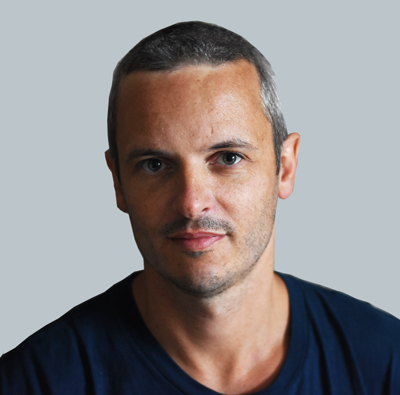
Book Review: Yoga in Britain By Suzanne Newcome
11 March 2022
Yoga in Britain: Stretching Spirituality and Educating Yogis. Suzanne Newcombe. 2019. Sheffield, Bristol: Equinox Publishing Ltd. 309 pages.
Yoga in Britain charts the course of yoga’s propagation within the cultural landscape of twentieth century Britain. Suzanne Newcombe uncovers a colourful history in which a seemingly obscure subject on the fringes of society becomes an established feature of Adult Education, is embraced by 1960s’ counterculture and goes on to feature regularly on British television.
Suzanne Newcombe is a senior lecturer in Religious Studies at The Open University. Her work on modern yoga focuses primarily on sociological and social historical research. The aim of this current publication is to describe the development of yoga in twentieth century Britain, to identify the principal modes of popularisation and to consider the practices and experiences of individual participants.
Yoga in Britain is comprised of eight broadly chronological chapters, each concentrating upon a key aspect of popularisation. The first seven chapters examine the period between 1945 and 1980. The eighth chapter discusses the diversity of practices and practitioners. The book concludes with a postscript summarising key developments from the 1980s’ until the present. Throughout the book a number of recurring themes are highlighted and explored such as class, charisma and education. Groups and individuals with the most prominent roles are spotlighted including Watkins bookshop, The British Wheel of Yoga and B.K.S. Iyengar.
Newcombe’s research draws from archival sources and personal interviews as well as newspapers, magazines and journals. Her archival research is particularly illuminating. In Chapter One (The Literary Elite: Booksellers and Publishers) Newcombe excavates correspondence from the archives of Penguin and Allen & Unwin, which offers an intriguing glimpse into the objectives of their authors and editors.
Newcombe’s sociological analysis is also distinctly insightful. Charismatic Gurus in Modern Education (Chapter Three) explores Max Weber’s ideas of ‘charismatic authority’ and ‘routinisation of charisma’ (76) in relation to the dissemination of yoga. Newcombe illustrates the utility of these concepts through examples of two contrasting charismatic teachers: B.K.S. Iyengar and Sunita Cabral. Iyengar’s prominence and enduring legacy is solidified through the routinisation of his charisma, whereas Cabral’s teaching fails to achieve widespread popularity or longevity (108).
The book’s historical narrative builds upon the work of Mark Singleton, whose Yoga Body (2010) concludes in the period prior to Newcombe’s study. Newcombe provides an important account of yoga’s reception after its engagement with modernity in the colonial period. In this account it becomes clear that the postural yoga surveyed by Singleton did not become the dominant form in Britain until the 1970s’ and 1980s’. Before that time, yoga’s transmission remained anchored initially to the philosophical orbit of esoteric publishers and subsequently to the influence of The Wheel of British Yoga1. Although proponents of the latter organisation included postural practices within their curriculum, yoga at this time was viewed as “essentially a spiritual and philosophical subject” (73). Newcombe details the pivotal decision taken by the Inner London Adult Education Authority in 1969 to reject the direction of the The Wheel of British Yoga in favour of the more physically orientated teaching of B.K.S. Iyengar (96). This decision arguably led to the proliferation of posture centric yoga from the 1970s’ onwards.
Where the book falls down slightly is in Chapter Eight, entitled Diversity of Practice and Practitioners. Despite the fact that the majority of the participants studied are white women, Newcombe fails to discuss this lack of diversity of race and gender, focusing instead on diversity of individual experience (243). A further criticism is that, although the violent temper of B.K.S. Iyengar is alluded to (242), the punitive and authoritarian elements of his teaching remain unexamined. An assessment of the influence of Iyengar’s harsh pedagogy would be a meaningful addition to this study.
Regardless of these shortcomings, the book succeeds very well in achieving its original aims. Newcombe provides a previously uncharted history of yoga in twentieth century Britain. Her consideration of practices, proponents and modes of transmission stimulates a nuanced and informed discussion about the way in which yoga is practised today. The work is well researched and written in an engaging style, which although academic is accessible. Additionally, Yoga in Britain is visually enriched with numerous monochrome images drawn from a range of sources. This book will undoubtedly be of considerable value to researchers of modern yoga as well as yoga teachers and members of The British Wheel of Yoga.
Yoga in Britain: Stretching Spirituality and Educating Yogis. Suzanne Newcombe. 2019. Sheffield, Bristol: Equinox Publishing Ltd. 309 pages.
Available from Equinox Publishing: Yoga in Britain
Note:
1)The Wheel of British Yoga changed its name in 1973 to The Wheel of Yoga (67). In 1976 the organisation became known as The British Wheel of Yoga (69).
Like this article?
Then why not share it with others who may enjoy reading it too:
Buy me a cuppa!
I hope you've enjoyed reading my blog. Perhaps you've learnt something new about yoga or its helped you with your own research and studies. Please help support my work and keep this website running.
